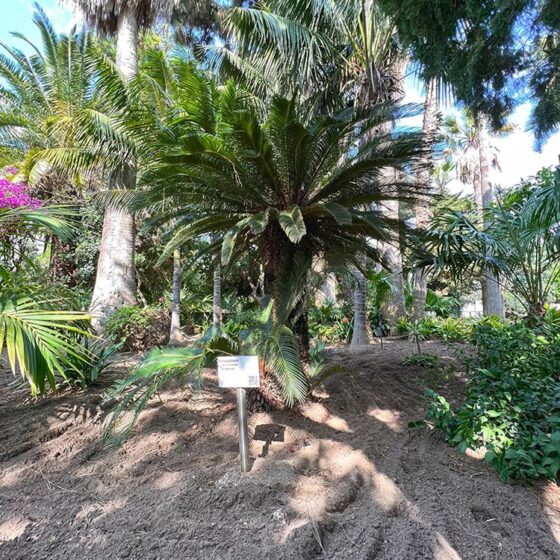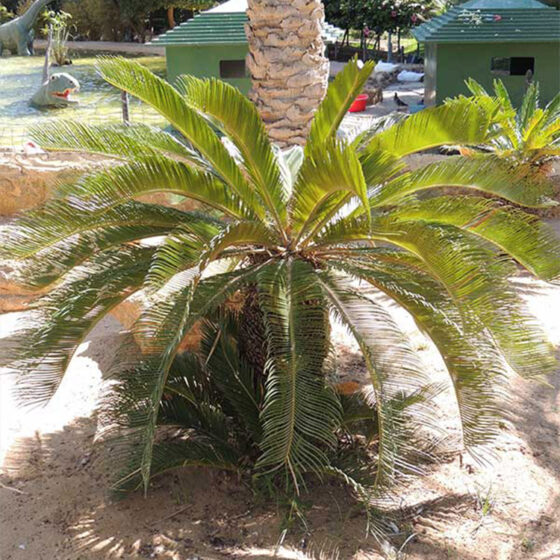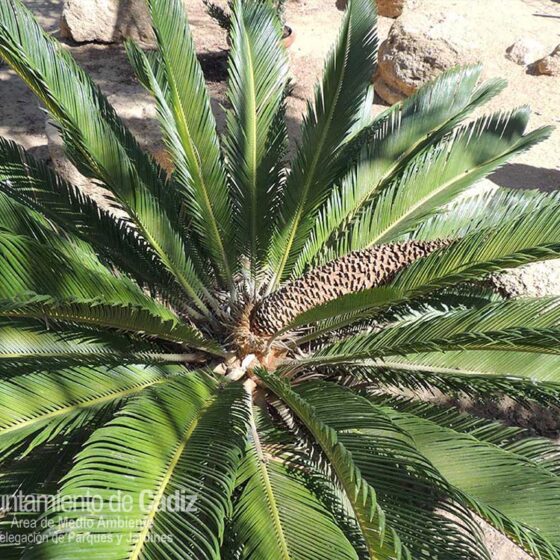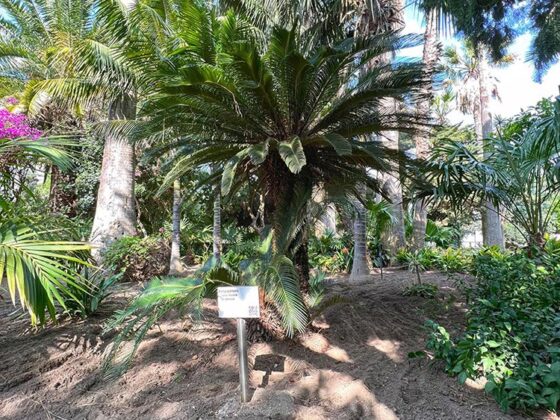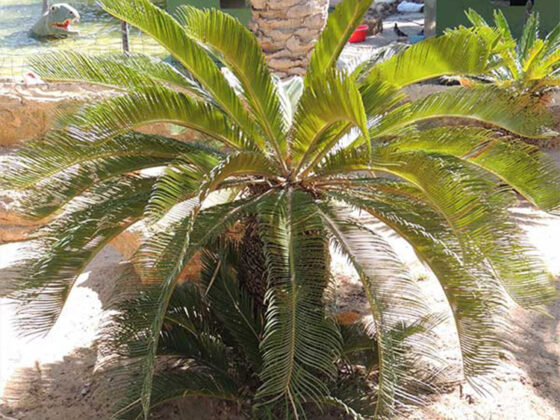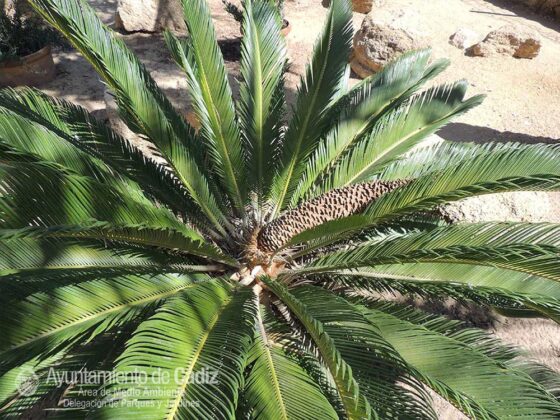Sago palm / King Sago palm
Cycas revoluta
The Cycas revoluta, the Sago Palm or the King Sago Palm, is a native plant from the south of Japan. It is usually cultivated as an indoor plant, since it does not do well in the cold, although, in Spain, it vegetates with ease in the Mediterranean area.
It has a cylindrical stem that presents an apical growth covered with the scars left by the leaves that it loses as it grows. These, pinnate and bright green in the midrib and matte on the back, form a terminal ridge. The inner part of the stem, the sago, is used for food because of its high carbohydrate content.
Its reproduction is dioecious, that is to say, the males bear pollen cones (strobilus) and the females bear groups of megasporophylls, which are then grouped in rounded cones that contain the macrospores. The masculine plants emit a lateral spike, that are grouped forming cones that can reach the 60 cm. Tall. Pollen can be spread by wind, but also by insects; for this the male plant increases its temperature by a few degrees, which attracts some insects.
If swallowed, it is extremely poisonous, both for humans and animals. Pets are more at risk because they find the plant extremely tasty.
They are the most primitive seed plants we have today. With more than 300 million years of existence, the cycas appeared before the dinosaurs. At that time they were an important component of the flora.
Throughout the Triassic and Jurassic periods, they constituted 20% of the vegetation.
At present, it seems that there are eleven genera of Cycas, but another 19 genera that don’t exist today have been found in fossil form.


